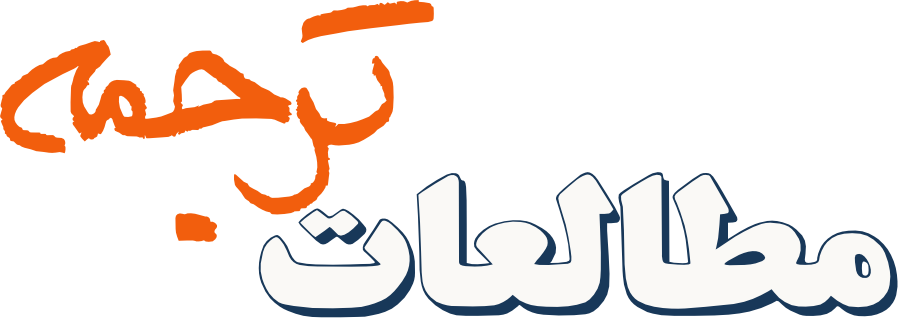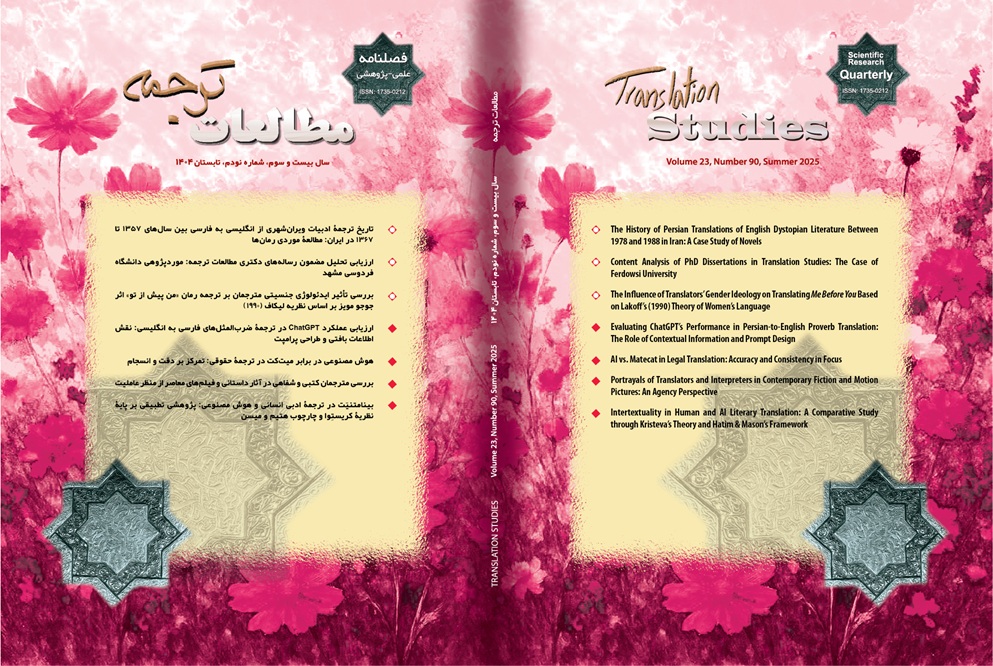ارزیابی عملکرد ChatGPT در ترجمۀ ضربالمثلهای فارسی به انگلیسی: نقش اطلاعات بافتی و طراحی پرامپت
چکیده
پژوهشهای پیشین چالشهایی را گزارش کردهاند که مترجمان در مواجهه با عبارات اصطلاحی، بهویژه ضربالمثلها، تجربه میکنند؛ چالشهایی که عمدتاً بهدلیل ویژگیهای فرهنگی خاص و پیچیدگی زبانی این عبارات به وجود میآیند. مطالعۀ حاضر کارآمدی ادغام هوش مصنوعی در فرآیند ترجمه را با تمرکز بر ترجمۀ ضربالمثلهای فارسی به انگلیسی بررسی میکند. برای این منظور، ۱۰۰ ضربالمثل فارسی از کتاب موسوی (۱۳۷۹) انتخاب و با اطلاعات زمینهای برگرفته از وبسایت دانشچی https://www.daneshchi.ir/category/zarbolmasal-irani/،) دسترسی: ژوئیه ۲۰۲۵) تکمیل شد تا درک جامعی از معنا و کاربرد هر ضربالمثل حاصل شود. این دادهها شامل معانی مجازی و توضیحات بافتی به ChatGPT-4o داده شد تا ترجمه انگلیسی تولید کند. ترجمهها با فرهنگنامههای معتبر مقایسه شدند تا صحت و دقت آنها ارزیابی گردد. یافتهها نشان داد که از میان ۱۰۰ ضربالمثل، ۷۰ مورد معادل دقیق انگلیسی داشتند، ۲۱ مورد معادل نادرست و ۹ مورد نیز بازنویسی بافتمحور شده بودند. نتایج حاکی از آن است که ChatGPT-4o در صورت دریافت بافت کافی، میتواند در ترجمه ضربالمثلها عملکرد قابلقبولی داشته باشد. با این حال، نرخ خطای ۳۰ درصدی نشان میدهد که نظارت انسانی همچنان برای اطمینان از دقت ترجمهها ضروری است.
مراجع
Afrouz, M. (2011). Translating provebs in the Gulistan of sa'di: Developing a new taxonomy based on Baker's (2011) model. Hikma, 21(1), 53–83.
Al-khresheh, M. H., & Almaaytah, S. A. (2018). English proverbs into Arabic through machine translation. International Journal of Applied Linguistics & English Literature, 7(5), 158–166.
Beekman, J., & Callow, L. (1974). Translating the word of God. The Zondervan Corporation for Summer Institute of Linguistics.
Bouhadiba, M. (2016). The deficiencies of machine translation of proverbs and poetry. Revue Maghrébine des Langues, 10(1), 222–240.
Duff, A. (1989). Translation. Oxford University Press.
Gao, Y., Wang, R., & Hou, F. (2023). How to Design Translation Prompts for ChatGPT: An Empirical Study. Proceedings of the 6th ACM International Conference on Multimedia in Asia Workshops, 26–37.
Hassani, G., Malekshahi, M., & Davari, H. (2025). AI-Powered transcreation in global marketing: Insights from Iran. English Language Overseas Perspectives and Enquiries, 22(1), 203–221.
Hernadi, P., & Steen, F. (1999). The tropical landscapes of proverbia: A crossdisciplinary travelogue. Style, 33, 1–20.
Jibreel, I. (2023). Online machine translation efficiency in translating fixed expressions between English and Arabic (Proverbs as a case-in-point). Theory and Practice in Language Studies, 13(5), 1148–1158. https://doi.org/10.17507/tpls.1305.07
Lauhakangas, O. (2001). The Matti Kuusi international type system of proverbs. ASF and Outi Lauhakangas.
Meider, W. (2004). Proverbs: A handbook. Greenwood Press.
Meider, W. (1988). English proverbs. Philipp Reclam.
Moosavi, M. (2000). A versified dictionary of Farsi proverbs and their English equivalents. Jahan Rayaneh.
Romaniuk-Cholewska, D. (2024). The machine translation (MT) of proverbs in the Eng-PL language pair. Studies in Logic, Grammar, and Rhetoric, 69(82), 553–570.
Spencer, T. (2018). Proverbial machine translation: Translating proverbs between Spanish and English using phrased based statistical machine translation. (Master's thesis, University of Southern Mississippi).
Togaymurodov, D. D. (2024). The translation challenges of proverbs, idioms, and cultural references. Academic Research in Educational Sciences, 5(5), 468–475.
Vukanović, M. B. (2025). Translating (metaphors) in the age of AI: Opportunities, challenges, and implications for the EFL classroom. English Language Overseas Perspectives and Enquiries, 22(1), 185–201.
Yamada, M. (2023). Optimizing machine translation through prompt engineering: An investigation into ChatGPT's customizability. Proceedings of Machine Translation Summit XIX, 2, 195–204.
Downloads
چاپشده
ارجاع به مقاله
شماره
نوع مقاله
DOR
مجوز
حق نشر 2025 Hamideh Nemati Lafmejani, Seyed Mehdi Mousavian

این پروژه تحت مجوز بین المللی Creative Commons Attribution-NonCommercial 4.0 می باشد.
Copyright Licensee: Iranian Journal of Translation Studies. This article is an open access article distributed under the terms and conditions of the Creative Commons Attribution–NonCommercial 4.0 International (CC BY-NC 4.0 license).





